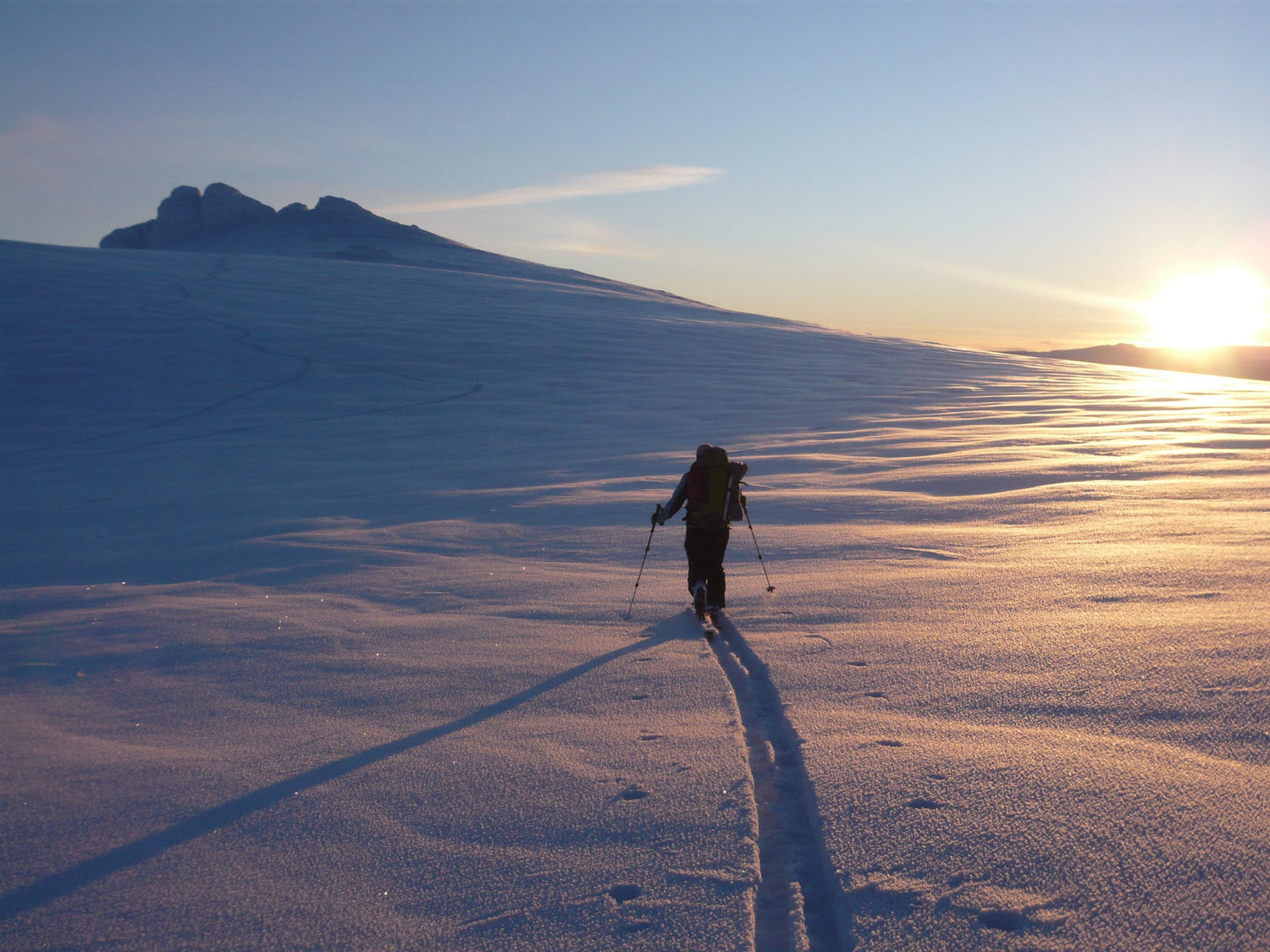Unless you wish to enter a state of hibernation, to continue enjoying the hills when the hours of darkness outweigh the hours of daylight, you are going to have to embrace night navigation.
And that doesn’t mean setting out to purposely walk over the hills under head torch – because, how silly is that – you won’t be able to see the amazing views! We’re talking about using a head torch in the morning before the sun rises and at the end of the day when we’re coming off the hill.
There is something special about the very early and late hours on the hills when the low sun casts its long shadows, the wildlife are at their peak and the hills are quiet. But let’s be honest, walking in the dark can feel quite daunting to begin with.
The normal open vistas that we are so accustomed to suddenly disappear and we are left with a very small illuminated bubble to follow. That’s why we’ve enlisted Di Gilbert, a fully qualified Winter Mountaineering and Climbing Instructor with almost 30 years experience, to outline things to think about if you’re considering joining the night-time adventurers.
In her own words, here are Di’s top tips for night navigation:

Invest in a good head torch
Sounds obvious but ‘good’ means different things to different people. I want a head torch that can be spotted from outer space when on its full power mode. It needs to be functional and fit for purpose and a size and weight that I don’t mind carrying or wearing. If it needs batteries, I will have a spare set and it’s not unusual to carry a small emergency head torch as a backup.
Check your compass
You are going to rely on this when night navigating so it needs to work. The most important feature when it comes to night navigation will be the fluorescent markers. These will be found in the compass housing, magnetic needle, and on the base plate. Hopefully, your summer compass will already have these basic features and if not, it’s time for an upgrade.
Trust your needle
Practice walking on a compass bearing in known areas, and we’re not necessarily talking about being high on a mountain. Any low-level area will work as long as you have features to aim for and it’s away from artificial lighting. Practice walking in the dark on a variety of terrain and especially on slopes.
Individuals tend to shorten their stride when walking on a compass bearing, especially under a head torch, and this will have an impact on your pacing and timing estimations. As confidence gains, the stride length returns to normal. Trust your compass – if done correctly it can be very accurate.

Use your summer navigations skills
Use all the summer navigation skills you have in your toolbox. Think about map reading, contour interpretation, distance, timing, pacing, and using a compass. You know, all the skills that you use every time you head into the hills, irrespective of conditions. Nothing changes when hiking at night, we’re just adding another layer.
Be prepared for reduced visibility
Normally when we navigate we paint a picture in our head on what we should be expecting to see and what we expect to happen. Nothing changes at night expect that instead of seeing we feel. Our legs are our greatest asset here and your legs will always tell you what you are doing. Listen to the feedback that your legs are giving you – are you walking on the flat, traversing a hillside, going up or down? Take that information and relate it back to your mental picture or consult your map.
Don’t forget a stopwatch
Pretty essential so you know how long you have been walking for. I would normally expect to be wearing gloves when night navigating so instead of having the watch on my wrist, I have a cheap and cheerful watch that lives on my rucksack chest strap which is easy to see at all times.
Navigating under a head torch is a deeply rewarding skill which can be easily mastered. Be brave and, as I said above, trust your compass.
Oh, and let’s be honest about one thing. All the really cool things happen when the lights go out.

About Di:
Di Gilbert is a fully qualified Winter Mountaineering and Climbing Instructor based in the Cairngorm National Park. For nearly 30 years she has been providing training and instruction to budding hill walkers, mountaineers, climbers, alpinists, and individuals training for 8000m peaks. For more information, please see www.digilbert.co.uk.





